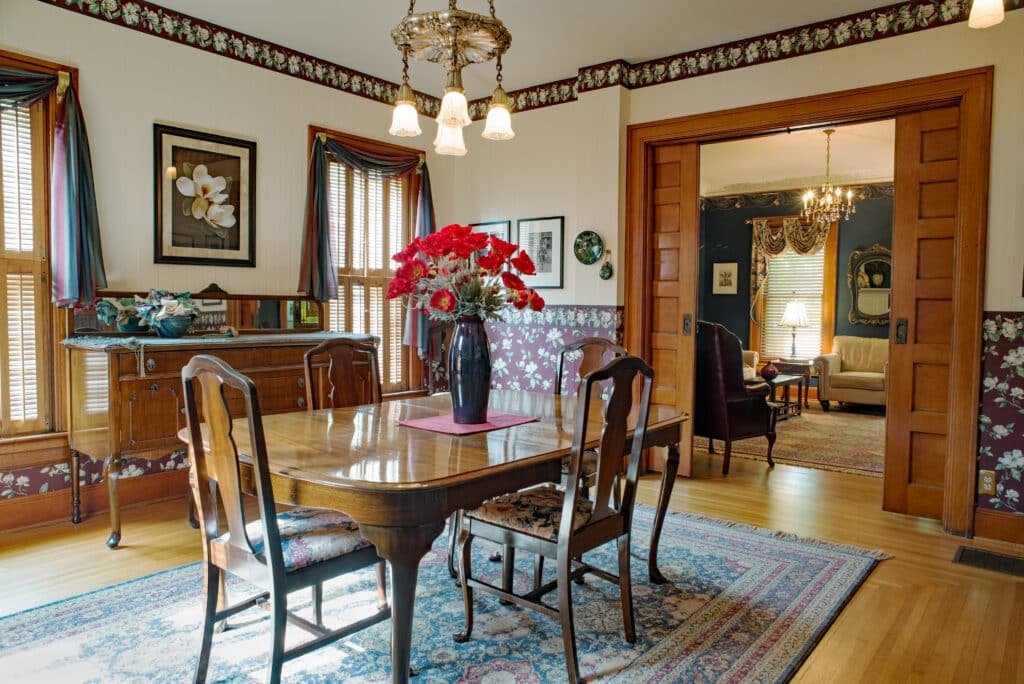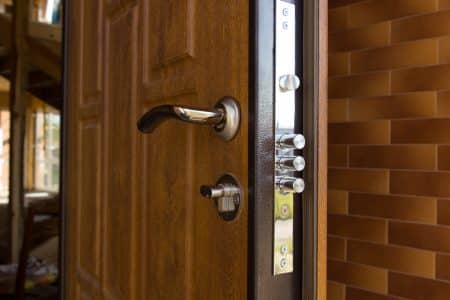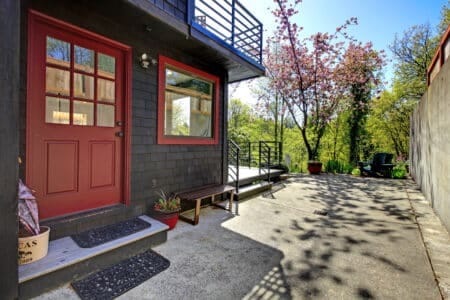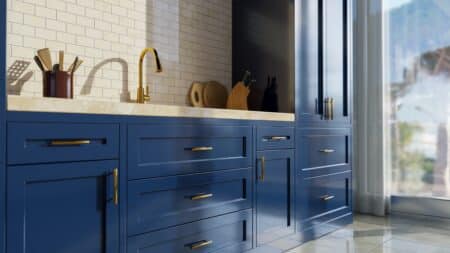In interior design, pocket doors have emerged as a game-changer, seamlessly blending the art of space conservation with a touch of sleek sophistication. These ingenious sliding marvels tuck themselves away into the wall, leaving a trail of intrigue and elegance.
But what exactly defines a pocket door, and how has it become such a coveted feature in minimalist modern abodes and grand traditional settings? Let’s delve into the world of pocket doors, from their mechanics to their myriad applications in contemporary living spaces.
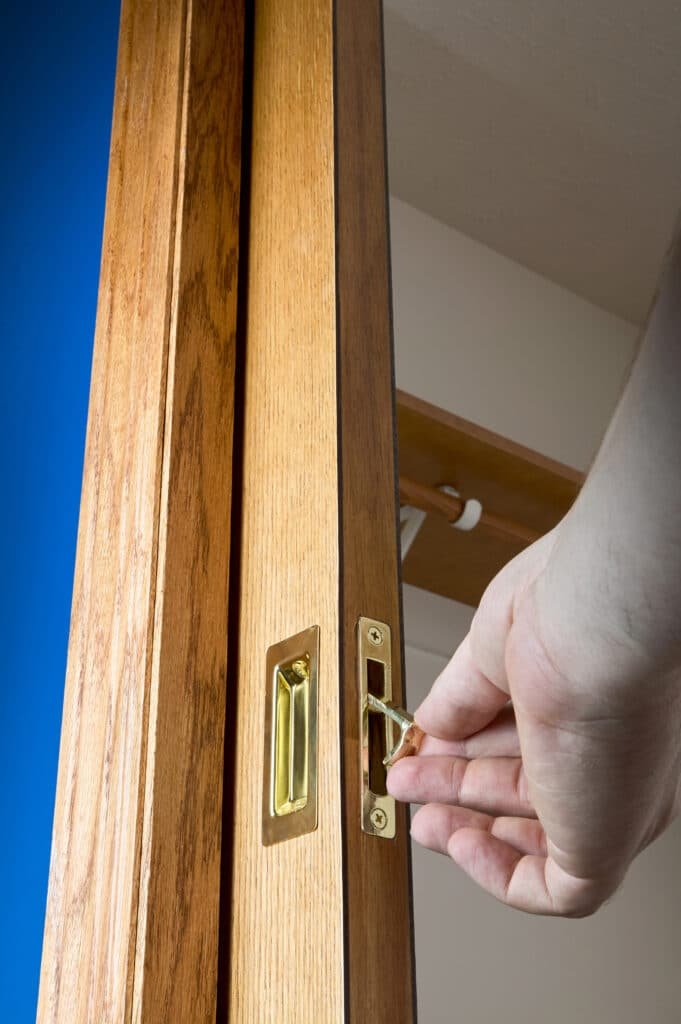
What Are Pocket Doors? The Magic of Space-Saving Design
Pocket doors are a transformative element in interior design, distinguished by their unique ability to disappear into a recess within the wall. Unlike their swinging counterparts, these sliding doors glide along a track and nestle into a concealed compartment, or ‘pocket,’ making them virtually invisible when fully opened.
This innovative design conserves valuable floor space and enhances the aesthetic fluidity between rooms, making them an exemplary choice for compact spaces and expansive, open-plan areas. At the core of a pocket door’s appeal is its seamless integration into the architectural fabric of a space. When opened, the absence of the door offers an unobstructed flow and a sense of openness.
At the same time, its closed position maintains privacy without needing the clearance that traditional doors demand. This dual functionality makes pocket doors a versatile solution that adapts to various living environments and design preferences.
The Mechanics Behind Pocket Doors: A Closer Look
The seamless operation of a pocket door is a marvel of design, underpinned by a sophisticated hardware system ingeniously concealed within the wall’s structure. At the heart of this system lies a meticulously engineered track strategically mounted at the top of the door frame, which guides the door into its hidden recess.
Precision-crafted rollers attached to the door ensure a smooth, frictionless journey along the track, facilitating the door’s ease of retreat and emergence from its pocket. These rollers are pivotal to the pocket door’s functionality, offering the dual benefits of silent operation and minimal effort required by the user.
Complementing the track and rollers are additional key components that contribute to the door’s efficiency and ease of use:
- Door Frame: This element houses the track and provides structural support, ensuring stability and alignment. The frame plays a crucial role in concealing the operational mechanics, maintaining the aesthetic integrity of the wall when the door is open.
- Guides: Positioned at the base, these guides maintain the door’s trajectory, preventing swaying or misalignment as it moves, thus contributing to its smooth operation and longevity.
- Pulls and Locks: Integrated into the door for functionality and style, pulls allow for easy handling, while locks offer privacy, especially crucial for doors used in bathrooms or bedrooms.
- Soft-Close Mechanisms: Some pocket doors are equipped with soft-close technology, which gently decelerates the door as it approaches the frame, preventing slamming and enhancing user safety.
Exploring the Spectrum of Pocket Door Varieties
Pocket doors are rich and varied, catering to various design preferences and functional needs. From the simplicity of single panels to the elegance of glass, each type of pocket door brings unique charm and utility to a space. Let’s talk about the diverse types of pocket doors and their distinct characteristics:
Classic Single Panel Pocket Doors
Single-panel pocket doors are the quintessence of pocket door design, featuring a solitary panel that gracefully slides into a recess within the wall. This type is highly versatile, effortlessly fitting into various architectural styles and room sizes, making it a go-to choice for seamless room transitions.
Elegant Double Panel Pocket Doors
Double-panel pocket doors come into play when the architectural layout demands a grander entrance. These doors have two symmetrical panels that glide towards opposite wall cavities, creating a broad, inviting passage. Ideal for expansive entryways or as sophisticated room dividers, they enhance the spatial dynamics with a touch of majesty.
Translucent Glass Pocket Doors
Glass pocket doors infuse spaces with light and visual continuity, featuring transparent or semi-transparent panels that maintain an open, connected feel. These doors are particularly beneficial in settings like home offices or communal areas, where the flow of natural light and the preservation of sightlines are paramount.
Privacy-Assured Frosted or Tinted Glass Pocket Doors
For those seeking a blend of light diffusion and privacy, frosted or tinted glass pocket doors are optimal. The clarity of the glass allows for light penetration while obscuring clear views, making these doors perfect for private spaces such as bathrooms or en-suites that require an added layer of seclusion.
Specialty Pocket Doors: A Niche for Every Need
Beyond these common types, the realm of pocket doors extends to specialty variants designed to meet specific aesthetic or functional criteria:
- Mirrored Pocket Doors: These doors double as full-length mirrors, offering functionality and the illusion of expanded space, ideal for closets or dressing rooms.
- Acoustic Pocket Doors: Engineered with sound-dampening materials, these doors help create quieter, more serene environments, suitable for study areas or home theaters.
- Fire-Rated Pocket Doors: Constructed to withstand high temperatures, these doors provide an added safety feature, crucial for commercial spaces or as part of home safety protocols.

Unlocking the Potential: Versatile Applications of Pocket Doors
Pocket doors are not just a testament to space-saving design but also a versatile element adaptable to numerous applications within a home. Their ability to blend seamlessly into the architecture makes them suitable for various settings, enhancing functionality and aesthetics. Here’s a closer look at the multifaceted applications of pocket doors:
- Bathrooms are ideal for maximizing space in compact and en-suite setups, enhancing functionality without compromising style.
- Closets and Pantries: Streamlines access, eliminating the need for swing space and optimizing storage areas for efficiency and ease.
- Room Dividers: Offers the flexibility to transform open-plan spaces into private areas, perfect for adapting living spaces to various needs.
- Living Areas: Maintains an open feel in larger rooms, providing the option for privacy when needed and fostering a sense of continuity.
- Home Offices: Creates secluded workspaces within the home, ensuring privacy for calls and focused work, with the flexibility to open up the area.
- Creative Nooks: Transforms underused spaces into functional spots like cozy reading corners or hidden storage, maximizing every inch of the home.
- Specialty Spaces: Adapts to unique home areas such as home theaters or art studios, offering sound isolation or serving as movable partitions.
Weighing The Pros And Cons Of Pocket Doors: A Comparative Look
Pocket doors, with their unique blend of functionality and style, offer a range of benefits while presenting specific challenges. Grasping these aspects enables you to make a well-considered choice regarding their integration into your living space.
Pros:
- Space-Saving: Pocket doors slide into the wall, eliminating the swing area needed for traditional doors, perfect for compact spaces.
- Design Harmony: With the ability to vanish, they maintain a clean, uncluttered aesthetic, fitting various decor styles from modern to classic.
- Functional Flexibility: Ideal as versatile dividers, they can quickly transform spaces from open-plan to private.
- Accessibility: Provide easy, barrier-free access, accommodating a wide range of mobility needs.
- Decor Freedom: Open pocket doors don’t obstruct wall space, allowing for creative use of art and furniture.
Cons:
- Installation Complexity: Retrofitting pocket doors involves extensive wall modifications, precise planning, and possibly rerouting utilities.
- Maintenance Demands: Hidden tracks and rollers can complicate repairs, sometimes requiring wall opening.
- Cost: Initial setup, including high-quality materials and professional installation, may surpass traditional door costs.
How To Select The Perfect Pocket Door?
Choosing the right pocket door involves assessing its use, ensuring it meets privacy needs with appropriate locks or frosted glass, and matching it to your home’s aesthetic. Durable materials are essential for high-traffic areas, while the door’s design should complement your interior style.
Consider custom options for unique spaces and consult with professionals to navigate installation requirements, ensuring the door fits seamlessly into your living environment.
Pocket Door Installation Guide: Essential Steps
Installing a pocket door is meticulous, demanding careful planning and attention to detail. Here are some essential steps involved in the installation process:
- Wall Evaluation: Check for the intended wall’s structural barriers (beams, wiring, plumbing).
- Measure and Mark: Accurately outline the pocket’s dimensions on the wall.
- Frame Construction: Build or modify the wall framing to create the pocket.
- Track Installation: Securely mount the track at the top of the frame, ensuring it’s level.
- Roller Attachment: Affix rollers to the top of the door for smooth sliding.
- Door Alignment: Hang the door on the track, adjusting for free movement and proper closure.
- Guide Placement: Install bottom door guides to stabilize movement.
- Hardware Installation: Add door pulls and locks for functionality and ease of use.
- Finishing: Seal gaps and apply paint or finish to match the room’s decor.
Pro Tips:
- Opt for high-quality hardware for durability.
- Consult professionals for complex installations.
- Regularly inspect and maintain the track and rollers.
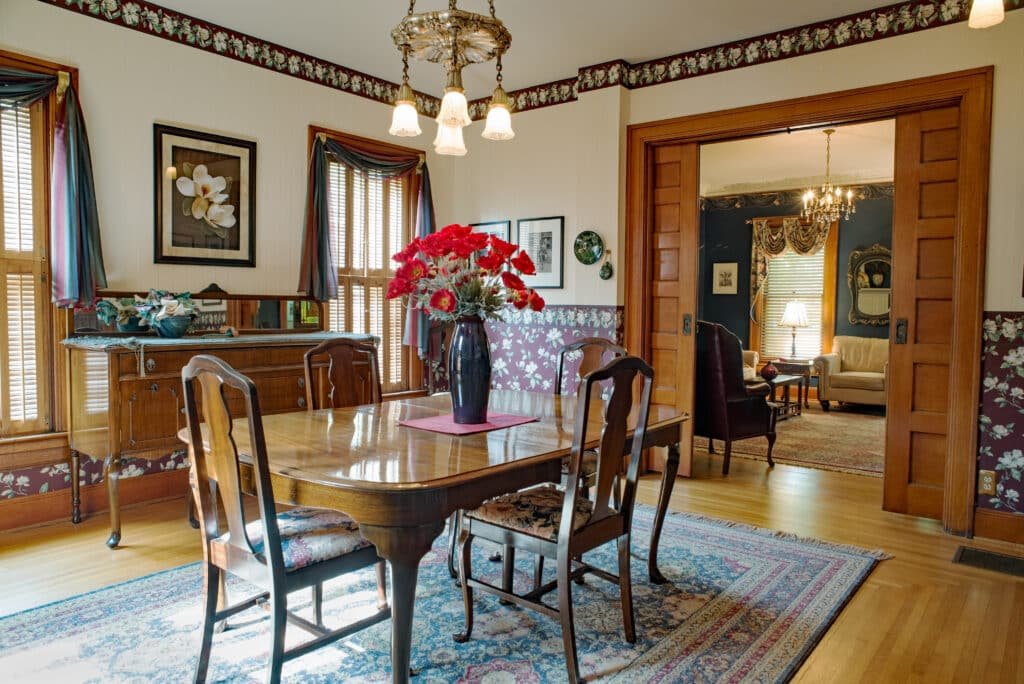
Maintaining A Pocket Door For Peak Performance
Proper upkeep of your pocket door is key to its durability and smooth functionality. Essential maintenance tasks include regularly cleaning the track to remove debris, applying lubricant to the rollers for effortless sliding, and inspecting the hardware, such as the track and rollers, for any signs of wear or damage. Addressing these aspects promptly can prevent common issues and extend the lifespan of your pocket door.
In Closing:
Pocket doors are more than just a space-saving solution; they are a testament to modern design’s ability to merge functionality with elegance. Whether embarking on a new building project or renovating an existing space, pocket doors offer a versatile, stylish, and practical alternative to traditional doors.
With the proper selection, installation, and maintenance, pocket doors can transform your living spaces, providing seamless transitions and enhancing the overall aesthetic appeal of your home.
